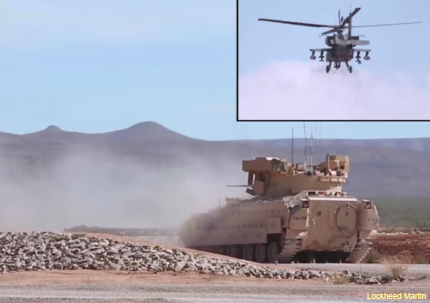Army adds air support to live-fire digital range training
Lockheed Martin delivers a Digital Air Ground Integration Range that incorporates aircraft for a more realistic environment.

The Army’s live-fire training exercises are getting more encompassing, with the addition of a digital training range that incorporates air and ground assets and provides soldiers with detailed, high-fidelity feedback after exercises.
Lockheed Marin recently delivered a Digital Air Ground Integration Range (DAGIR) to the Army’s Program Executive Office for Simulation, Training and Instrumentation that, with air operations included, provides more realistic scenarios for training and crew qualifications. Located at Fort Bliss, Texas, the DAGIR is now the Army’s largest training range.
The range is part of the Digital Range Training System, or DRTS, program, which provides immersive training on tactical vehicles in a realistic but low-risk environment. DAGIRs are live-fire training ranges that use digital methods of evaluating performance, and provide a venue for crew qualifications. But although aircraft have been used in air-ground ranges, the evaluation process wasn't completely integrated. The Army wanted to get aviation—including unmanned aircraft—more completely into the mix in order to measure the effectiveness of an integrated mission.
The quality of feedback is also something the Army wanted to improve. In a 2012 Army account of training at a DAGIR at Fort Rucker, Ala., for example, after-action review for aircraft has handled separately, and a capability manager noted that they were still looking at aircraft tape on a seven-inch screen, “the same way we did back in 1992.”
Lockheed’s new system is the first to fully integrate air and ground assets, the company said. And earlier this year, the company said, it upgraded its DRTS to provide “almost movie-like visuals” to after-action reviews.
A second integrated DAGIR is being added to Fort Knox, Ky.



